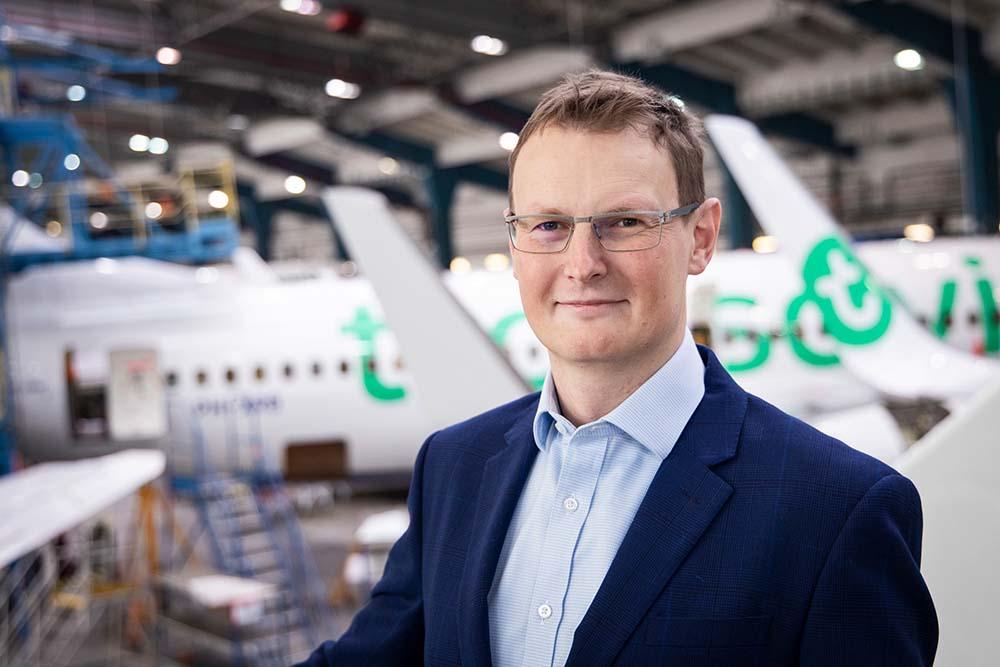
Petr Dobersky, chairman of the board at CSAT.
Czech Airlines Technics’ recently appointed chairman of the board, Petr Dobersky, is eager to return CSAT to its pre-pandemic fortunes and to create a solid foundation for its base maintenance and other related divisions.
Speaking specifically on the return of narrowbody MRO demand, Dobersky says the rate of return depends primarily on the ability to meet the requirements of operators, alongside the return on investment required to generate a reasonable profit.
“Our priority right now is customer satisfaction and the stable development of our company,” says Dobersky.
In September, CSAT announced a new long-term agreement with Transavia Airlines that extends its long-term partnership for another five years. CSAT will provide Transavia with three full-scale parallel base maintenance lines during the contractual agreement period.
The main maintenance season from November to April 2023 will be allocated for revisions of all levels, including basic C checks through complex revisions, such as the demanding corrosion prevention and control program and redelivery checks.
“The number of revisions varies in each maintenance season,” Dobersky says, noting that it depends on the level of difficulty, the duration of the revisions and the timeframe Transavia books for aircraft maintenance in the given season. “On average, we are talking about approximately 20 revisions per year. In addition, upon request, we naturally provide maintenance slots for any projects outside our main maintenance season. However, given that in the vast majority of cases these are unplanned events, we solve these ad-hoc requests according to our current availabilities and capacity situation.”
The contract with Transavia also includes services on its new A320neos, and in terms of developing capabilities, Dobersky stresses that maintenance on the Neo family is not new to CSAT. “We have been performing such base maintenance revisions since last spring and in relation to the gradual transition of this type at Transavia, we do not have to deal with capacity adjustments beyond the scope of regular operations,” he says.
However, Dobersky says CSAT is gradually investing in procurement of the necessary equipment, and he also foresees the need to increase ground service equipment, staff and tools for the A320neo family.
CSAT is dealing with supply chain disruptions and labor shortages through backup solutions, identifying alternatives to current suppliers and optimizing warehouse stocks.
“We have been able to stabilize the staffing levels, but we are aware of the shortage of aircraft mechanics and tinsmiths on the labor market,” says Dobersky. He estimates around 100 new employees will be needed to meet growth targets, but the situation is complicated since the technical skills required are hard to find outside the aviation industry.
Given that backdrop, CSAT is also looking abroad to fill its technical labor requirements and using contractors to fill temporary roles. “Despite the crisis in aviation, we managed to maintain all the company benefits that our employees were accustomed [to] and next year we are planning significant salary increases,” says Dobersky. “In addition, the agreement with Transavia alongside other initiatives will secure enough job orders for the coming years.”





